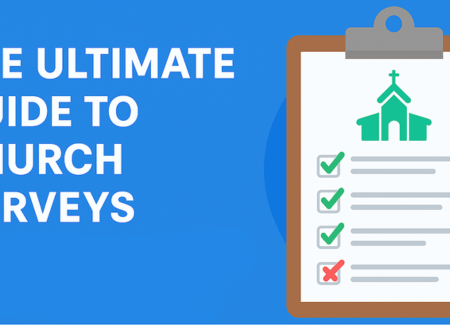Devising the Perfect Church Structure For Your Needs
Like in any organization, a church needs to have a sense of structure. Having clearly defined roles allows for greater efficiency and clearer communication. A great structure ensures that a church can best serve its community and congregation.
Given the variety of roles required to keep even the smallest of churches running effectively, every member of the church’s leadership needs to know precisely what they need to do to keep things on track.
Here at ChMeetings, we understand how important organization is to running a church. That’s why more than 3,000 churches and dioceses trust our cloud-based church management software.
In this article, we’ll teach you all you’ll need to know about structuring your church’s leadership team.
What are some typical roles in Churches?
To the everyday church-goer, it may come as a surprise just how many moving parts there are involved in the running of a church.
While the individual needs of each church will be different, here are a few roles that we consider vital for any church to function effectively. We’ll also briefly discuss how these roles fit with a wider organizational structure.
Pastor/Priest
The Pastor – or Priest depending on your church’s denomination – is one of the most important roles in any church, the pastor leads the spiritual aspect of a church.
Due to the nature of the role, the pastor will likely be involved in the majority of church events, with regular tasks including writing and preparing sermons as well as arranging other liturgical aspects of a church’s regular service schedule.
The pastor – as the church’s de-facto leader – will need to keep in touch with everyone in the church’s organizational structure. It’s their role to guide the overall spiritual direction of the church – and that involves having a hand in events, maintenance, music, etc.
Custodian
The custodian’s job may be more ‘behind the scenes’ than other roles – with many calling them being the church’s ‘caretaker’.
To run a church effectively, a custodian needs to be kept in the loop of events and are in tune with the church’s overall strategy.
The custodian is responsible for the church’s general maintenance, upkeep and cleanliness.
These responsibilities often include cleaning the church building after services, and between events. This includes vacuuming, cleaning restrooms, cleaning church kitchens etc.
A custodian ensures the church is kept in good working order – and will therefore need to be reachable by everyone in the organization in case of any urgent repairs or maintenance.
Accountant/Financial Director
Whilst a church is a place of worship and community, it also needs a financial leg to survive. In other words, proper management of a church’s budget is essential.
You may need an accountant or financial manager to ensure that proper spending practices are adhered to. Most if not all major decisions will most likely need a budget, so the accountant needs to be easily reachable.
Other Roles
An effective church needs team members and volunteers. Here are some other common roles:
- Musical Director: Oversees the worship music aspect of church services. Listening to music is a huge part of faith. It’s the role of a musical director to lead music-related activities and coordinate music for services and events.
- Outreach Co-Ordinator: Holding fun and meaningful events is an important aspect of outreach and ensures that the local community stays engaged with the church.
- Volunteers: Responsible for odd jobs and helping out other teams.
What is the Best Church Organizational Structure?
There are many ways to structure a church’s leadership committee. However, we believe the most effective is a “departmental” structure.
This would divide roles into departments by areas of responsibility, with departmental heads or team leads guiding the process, and liaising with other departments.
In a larger church, there may be one or more people directly responsible for each of the roles mentioned above, and a number of other paid roles or community volunteers who would directly report to them.
An example structure may look like this:

You need to remember that no structure is a “one-size-fits-all” approach. Each church will have its own needs.
For example, the pastor may have responsibilities with other churches, so a central organizational role may not be suitable, or multiple jobs may be filled by single individuals
Instead, our example structure is designed to give you some general guidelines on how to approve various roles and responsibilities and how they may interact within a church organization. Our structure can be divided into departments/teams based on responsibilities.
What are some different Church Structures to consider?
The “departmental” approach won’t fit every church. Here are some other leadership structures to consider:
Elders Approach
Our departmental structure is a fairly flat one – with the leadership organized on the roles and responsibilities of staff and volunteers. However, most churches follow a more rigid, pyramid structure – with church elders at the top of the structure.

What are Elders? In some denominations – notably Presbyterian, Anglicanism, Eastern Orthodoxy and Roman Catholicism – elders are ordained members of the church that act as the designated leaders in the church.
You can think of the “body of elders” as a church council – where elders, along with the pastor (or bishop), decide the direction of the church.
Here, we introduce the Deacon – essentially an assistant pastor that serves the elders. They aid with pastoral care and administrative duty too. Deacons are sometimes called “youth pastors” when they primarily work with young people.
This “decision by committee” approach can sometimes lead to delayed decision-making and conflicts of interest. In some churches, certain elders are responsible for overseeing different teams – or ministries. Given this, when all elders are aligned on a shared vision, this structure allows for strong leadership in all areas of the church.
Separation of Ministry and Governance

Some churches prefer to separate the act of governance and management from the church’s religious duties. This separation of power results in two “heads” of the church – a chair and a pastor.
This results in two decision-making bodies too:
- a church ministry, responsible for the religious direction of the church and
- a church council, responsible for keeping the ministry accountable and running the church.
The benefit of this approach is increased accountability – especially for larger churches. This approach is common in evangelical churches. However, any separation of power is bound to slow down decision-making and increase bureaucracy. An aligned vision and shared goals are key to success here.
Church Structure Best Practices
No matter which organisational structure makes sense for your church, there are some key principles to keep in mind:
Have clearly defined roles
Every member of your church, no matter their role, must know precisely what their role is and what responsibilities are expected of them.
Poorly defined roles within a church structure can often lead to confusion over who may need to complete tasks or carry out vital church functions. This risks leaving important tasks incomplete.
For example, a custodian may not be aware of their responsibility to clean out of church hours – leaving the church unclean after late events.
A great practice when recruiting members and volunteers is to provide a clear job description of their roles and responsibilities. This provides church leadership with a document to refer to if they’re ever unhappy with a staff member’s work.
How can your church effectively track and organize your members within your structure? With Chmeetings, you can assign people to groups and let members stay in touch with who they need to communicate with! Find out more here!
Encourage clear communication
While this may seem obvious, clear communication is essential for a smooth-running organizational structure. Everyone needs to be kept up to date on upcoming events and what responsibilities they may have relayed to them.
We recommend using:
- Group chats for ‘departmental’ teams and the church’s core leadership.
- Regular email (or, indeed, paper) newsletter or other forms of announcements sent to church members and volunteers
- Ensuring all members of the organizational structure have a method of contacting each other.
When communication breaks down, tasks can often be left incomplete. It is important, that team leaders are effective communicators, who can both liaise with the people that report to them and with other teams, so no one is left out of the loop.
Delegate tasks effectively
Take advantage of the vast skills and knowledge of your staff and volunteers and delegate those tasks that can be completed more effectively by someone else!
In our departmental structure, this involves leaders keeping their team members in the loop of tasks and delegating regularly. This ensures jobs are completed quickly, effectively, and handled with an appropriate level of care & attention.
Champion support structures & networks
Finally, appropriate professional support structures need to exist to ensure that everyone (whether that’s leadership or volunteers) has the necessary knowledge and skills to run the church effectively.
First and foremost, it is essential that department heads are able to provide advice and guidance for their team, especially when team members may not be aware of how to complete certain tasks or responsibilities.
If things go sour and team members feel they aren’t getting the support they need, it’s the role of a welfare coordinator (or in larger churches, a HR manager) to address these concerns.
Streamline Church Organizational Management with Chmeetings
A well-defined organisational structure is the key to an effective and efficient church.
Clear and succinct roles, job descriptions and great communication practices ensure that the vital day-to-day jobs get done.
Chmeetings facilitate effective interpersonal and interdepartmental communication, as well as clear and simple task allocation, providing a strong base for your church’s daily running.
Our tool streamlines creating and managing a church organizational structure. We provide churches with a task manager, a communication platform and a cloud-based synchronized calendar solution.
With Chmeetings, you can ensure your church is run effectively and smoothly. Spend less time on managing your teams and spend more time on what really matters – building relationships with God and your local community.










